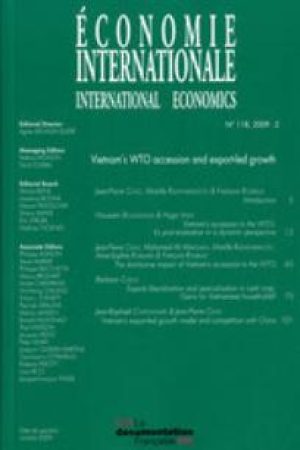Vietnam’s WTO accession and export-led growth

Sous la direction de Jean-Pierre Cling, Mireille Razafindrakoto et François Roubaud
2009, Economie internationale 2009/2 (n° 118), 136 pages, ISSN : 1240-8093 ISSN en ligne : 1777-5582
Vietnam joined the World Trade Organization (WTO) in 2007 and became its 150th member. This accession is something of an endorsement of a long process of trade reform and international integration, which started more than two decades before in 1986 with the launch of Doi Moi (Renovation). Indeed, the launch of Doi Moi marked Vietnam’s transition to a « socialist-oriented market economy » and the start of a process of trade liberalization and export-led growth. Vietnam’s international integration met some initial difficulties, as the country was totally isolated at the beginning of the 1990s following the fall of the Berlin wall. After the end of the American embargo in 1994, Vietnam engaged successively in several regional and bilateral trade agreements: it joined first ASEAN (Association of South East Asian Nations) in 1997, then signed the ASEAN Free Trade Agreement (AFTA) in 2001. It also signed a bilateral trade agreement with the United States (USBTA) in 2000, which opened the US market to Vietnamese products (but with quotas). At the same time, tariff disarmament has been gradual but significant, so that following WTO accession additional trade liberalization for goods is limited: average Vietnamese consolidated tariffs will only decline from 17.4 percent in 2007 to 13.4 percent in 2019.
